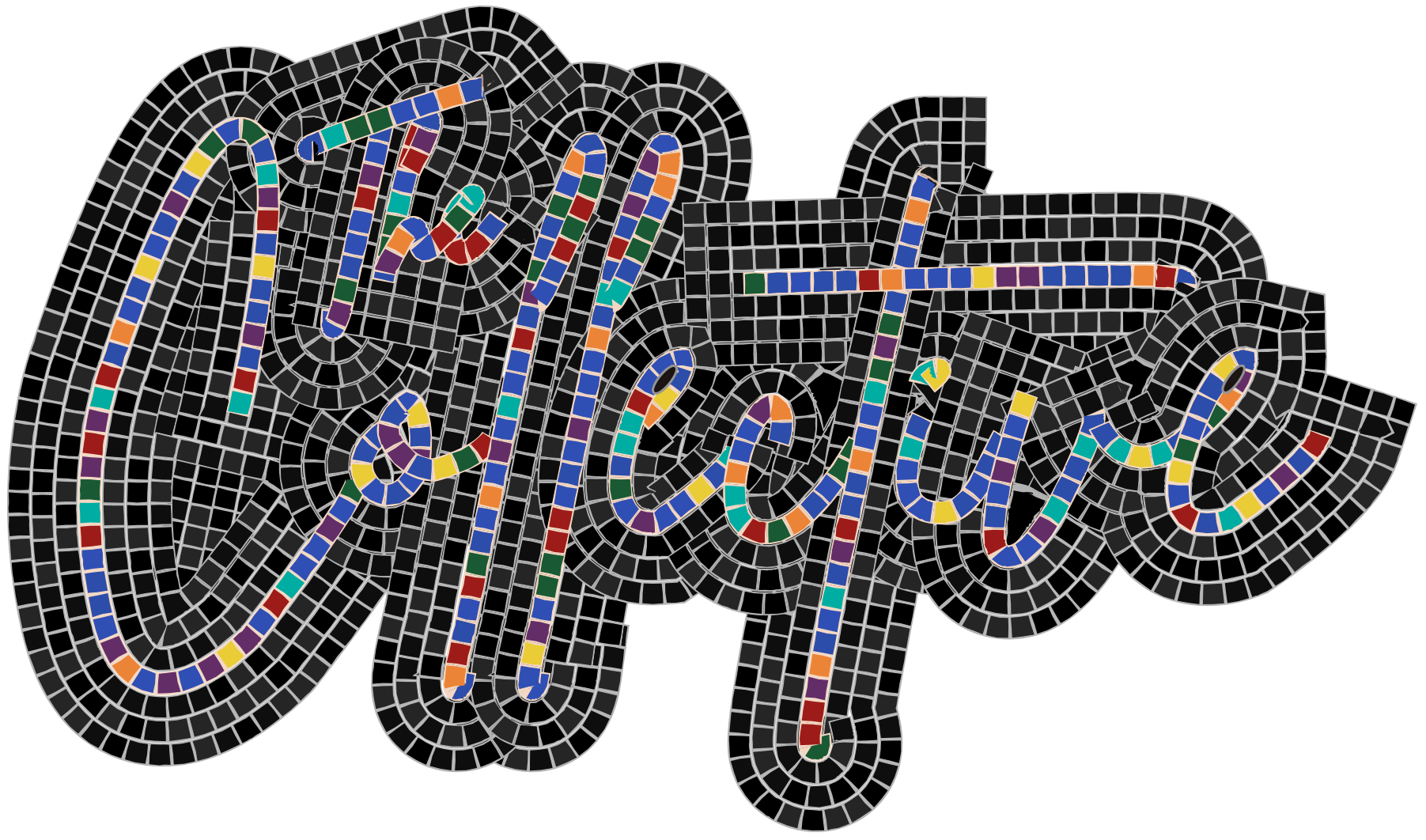This article is to be read in tandem with viewing Raya and the Last Dragon.
Disney has long used death as a plot point in its animated works to create tension, empathy, and subsequent triumph in the narratives of its colorful characters. But topics of death are rarely confronted beyond the point of plot saliency — the death of parents to create orphans, for example, is a common character arc that seems to transcend cultural make-up. Specifically, in Raya and the Last Dragon (2021), the plot device of resurrection is problematically used as an accepted meaningful gesture of cultural diversity; rather, a feeling of colorful everlasting persists, idealizing shallow and simplistic washes of diverse cultural representation, presenting utopic ideologies of happiness, and, ultimately, allowing Disney’s animated characters to live forever unaffected across subsequent feature films. And this type of diversity — simply employed as design rather than engaging in nuanced cosmologies — often leads to a stale inquiry of exploited ethno-aesthetics.
“Diversity” in Raya is displayed using the ostensible unity of Pan-Southeast-Asianness: culinary scenes featuring ingredients from every nation in Kumandra show a unified approach to agriculture across the region (time stamp in the film: 9:42-:52); scenes depicting mixed martial arts show somatic diversity (throughout most of the movie); symbolism of visual cultural artifacts, such as shadow puppetry from Malaysia and Indonesia, show visual syncretism (in the introduction); and scenes uniting people through familial sacrifice show shared ideologies of social relationships (moments between daughter and father or daughter and mother). Unity, here, is positive and, especially in our current geopolitical climate, should be championed as social progress. So, the film does a relatively good job of unifying regional diversity… at least, it would if we were only entirely ocular-centric beings. If we widen our attention beyond the movie’s visual spectrum to include the accompanying sonicity — its semiotics of sound — the story falls short of its intention to elevate the diversity of Southeast Asia’s communities, especially in the sonic portrayal of death. Howls of chant ending with gong chime cadences get us only as far as cheap sonic signifiers of stereotypical Asian heroism.
I want to be clear that I have no problem with the general goal of the film’s trajectory — to highlight the presence of Southeast Asian culture in popular media. But here, I focus on the misrepresented visual and sonic ideas of reincarnation as a medium of critique in Raya and how intra-cultural sound in Southeast Asian death ceremonies, if included in the film’s narrative, would have given a more nuanced representation of life within Southeast Asian cultures and, thus, a more empathetic inquiry of Pan-Asianness as a whole. I question if integrating Southeast Asia’s diverse soundscapes of death rituals as a way to affirm concepts of reincarnation would provide an integral lens to experiencing Raya as a uniquely regional movie, rather than a banal manifestation of Global Pan-Asian narrative. If Disney had truly engaged with Southeast Asia’s myriad of regional sounds — especially of death rituals — they might have highlighted the complexities of Asian identity to allow for deeper analysis of glocal social relationships, instead of propagating more formulas of pop musical canon.
If Disney’s characters can be alive only through the distilled gaze of Western arts hierarchical canon, then, without the prospects of reincarnation, the human imagination might as well be dead.
Here’s an overview of what Disney missed: Death traditions, rituals, and ceremonies are expansively diverse throughout Southeast Asian countries in mythology, performativity, and phenomenology. While major religions are prominent in each country of the region, what makes them unique are local manifestations generally tied to cosmologies of environment — Filipino scholar Bernard Ellorin describes that even though the Sama-Bajau people live mostly in water, their funerals follow Suni Muslim practices that take place on land (Ellorin, 2022) — and how they are made syncretic with Indigenous practice and/or adapted for changing communities. And, many of the ceremonies’ sonic qualities are tied historically with ideas of social boisterousness and commotion, a core foundation of Southeast Asian life itself. In this way, death rituals — and, concomitantly, the sounds equated with them — are essential elements of social success.
In Bali, for example, music such as gamelan baleganjur is used to appease disruptive entities at cremation ceremonies so the deceased soul may enter the next phase of reincarnation peacefully. As a practitioner, composer, and ethnographer of baleganjur, I have learned that without the presence of this noisy processional music, the soul may be lost and, later, return to the tangible world as one of the disruptive beings, which could have negative consequences for the social components of local and global Balinese life. This particular faction of death ritual is embedded in a Hindu-Dharma cosmology that developed from syncretism with Indigenous animism.

Death rituals within Southeast Asian communities have stayed relatively static, barring ties to class, money, and notions of global capitalism. Ethnomusicologist Ben Cefkin, in a recent interview, describes his experience at Thai Royal cremations as “an event of commotion that is elevated by the sonic density of Buddhist followers” (Cefkin, 2022). There are many more aspects of death rituals in Southeast Asia that viewers of Raya could benefit from with a little more cultural knowledge, and in order to break away from compressed cultural consumption, viewers must be given the chance to confront their own assumptions of cultural value and diversify their conceptions of death. Most specifically in Raya, what should be reincarnation, is incorrectly distorted to resurrection.
Portrayed in Raya as a surface-level inquiry masked by emic cultural knowledge, reincarnation is often observed by critics as a binding theme or even as having a looming prevalence throughout the film. And while reincarnation is a common component in many Buddhist and Hindu cosmologies of Southeast Asia, its use in Raya insists on sheltering viewers. In each instance of liminality in the film — the father turns to stone, then unfreezes; Sisu the dragon is revived after being murdered — the phenomenon of reincarnation is focused on revival. These interpretations of liminality, as displayed in the animation, are contingent upon life being not stopped but paused, as if the character is in a coma. This visual comatose is an example of how Disney allows viewers an experiential escapism that plagues our societies’ dialectical relationship with life itself. In Southeast Asian cosmology, reincarnation is inextricably linked to death in such a way that, upon resurrection, the soul comes back as an entirely different living entity, rather than returning to its same pre-death manifestation. But in each instance of resurrection in Raya, not only is the resurrected being in incorrect form, but tension is created using Disney’s boring formulaic sonic palette of symphonic minor modes laden with blaring horns and overtly reverbed choral church chanting, thus further misrepresenting Southeast Asian cosmology and sonicity. The visual misrepresentation of reincarnation is made even more egregious with this sonic failing. This might have been mitigated by implementing Southeast Asian cultural sounds of death.
What if, instead, Sisu the dragon stayed dead and the nations of Kumandra united using sonic source material from Southeast Asia’s diverse death rituals of boisterousness and cacophony?
Commemorate death the way each locale does and accept it, rather than always having to find a solution for revival. American depictions of Asianness always strive for heroism that diminishes the quality of life lived by actual Asian communities, and America’s constant barrage of logic and explication will be the demise of imagination if it does not seek to confront the sublime. By accepting the ontology of death phenomena, we (as viewers) will not need to strive for a happy ending. Developing a more attentive ear for the nuances of noise as social and cosmological relationship might persuade viewers and creators of the film toward what most ethnomusicologists purport and realize: the affect of music and sound is culturally and socially defined and is in constant feedback with itself.
Disney’s mission to diversify humanity is a concerted effort to engage with its fast-culture consumers. Its corroboration of global popular discourse allows the audience a glimpse of cultural complexity but unfortunately, through masking misrepresentation as holistic representation, becomes an agent in perpetuating stereotypes. Raya is not only Disney’s first Southeast Asian animated film in their global cultural arsenal; it’s a space for Southeast Asian communities to be able to critique ourselves. But if Southeast Asian peoples are relegated to the processes of marginalization more politically recognized by East Asian communities in the United States, then no wonder we stay invisible — with no chance of reincarnation.
An anecdote to end: Last year, a non-profit organization in Denver, Colorado created an event to screen Raya for the public. Rather than contacting the Thai music ensemble, the Laotian dance troupe, the Cambodian theater company, the Balinese community ensemble, and/or one of the many other Southeast Asian performing arts ensembles in the area to participate in performance, they instead invited the usual Chinese Lion dance troupe and Japanese Taiko to perform, for the sake of grandeur. Naturally, I wrote the organization a passive aggressive e-mail detailing how their oversight of using East Asian music ensembles to accompany this Southeast Asian film was problematic regarding their mission of community engagement; audiences must be presented with authentically diverse representations of Asian cultures in popular media.

The post-colonialists got this right long ago, with scholars such as Homi Bhabha describing the process of emerging world cultures as constantly reshaping cosmopolitan perception (Bhaba, 1994); or Gayatri Spivak arguing that the recovered voice of the subaltern only perpetuates displacement of the oppressed (Spivak, 2010); or Edward Said noticing the Eurocentric prejudice against the presumed “Oriental” (Said, 1978); with all traversing avenues of dialectical webs of commodified stereotype. But then if death itself is ostensibly older than religious systems and their respective world frames, why has post-colonial critique largely dismissed it?
The answer might be similar to how viewers of Raya and the Last Dragon are encouraged only to affirm cultural stereotypes of Pan-Asianness rather than to engage in uncomfortable cosmologies such as death. Investigating how we choose to listen after death might provide a way to more empathetic and equitable listening during our beautiful lives.
References
Bhabha, Homi K. The Location of Culture. New York: Routledge, 1994.
Cefkin, Benjamin. Interview by Author. Denver, CO. March 4, 2022.
Ellorin, Bernard. Interview by Author. Phone Interview, United States. March 6, 2022.
Said, Edward W. Orientalism. New York: Pantheon Books, 1978.
Spivak, Gayatri. Can the Subaltern Speak: Reflections on the History of an Idea. New York: Columbia University Press, 2010.



